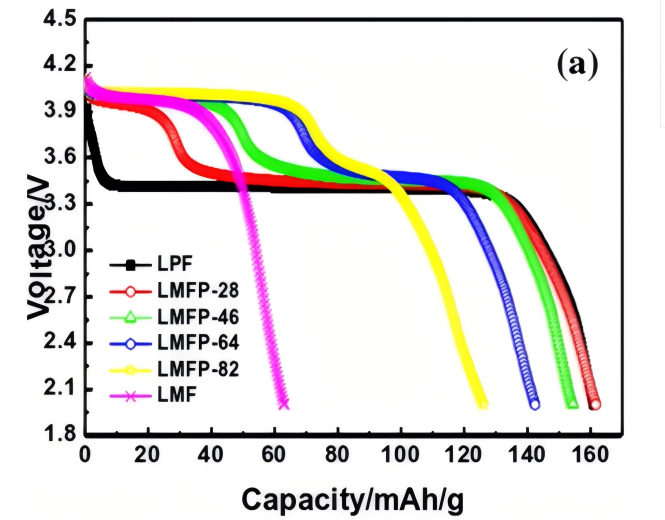English

In recent years, the global pursuit of clean energy and sustainable development has intensified. Lithium batteries, as efficient and lightweight energy storage devices, play an increasingly vital role in modern society. As the core component of lithium batteries, the performance of cathode materials directly determines a battery’s energy density, cycle life, and safety. Among various cathode materials, lithium manganese iron phosphate (LMFP) has emerged as a focal point in the industry due to its cost-effectiveness and excellent overall performance. This article explores the characteristics, production technologies, and future trends of LMFP, offering readers a comprehensive and insightful perspective.
Lithium manganese iron phosphate (LiMnₓFe₁₋ₓPO₄), or LMFP, is a phosphate-based cathode material for lithium-ion batteries. It combines the advantages of lithium iron phosphate (LFP) and lithium manganese phosphate, retaining LFP’s safety and stability while boosting energy density and voltage through manganese incorporation. LMFP boasts a theoretical specific capacity of up to 170mAh/g, along with excellent thermal stability and cycling performance.

Figure 1: Schematic diagram of LMFP structure.
Source: "Research on Composition Control, Preparation Optimization, and Electrochemical Performance of LMFP-based Cathode Materials."
The development of LMFP has paralleled advancements in lithium battery technology, particularly the rise of lithium iron phosphate (LiFePO₄) and ternary materials. Key milestones include:
2002: Scientists led by Goodenough proposed olivine-structured phosphate materials (e.g., LiFePO₄) as cathode materials. Research began on enhancing performance by doping elements like manganese (Mn), laying the groundwork for LMFP.
2010: As LFP gained market traction, researchers found that adding manganese could increase battery voltage and energy density. Early studies focused on improving conductivity and stability.
2015: Progress in LMFP synthesis and performance sparked interest in its potential for electric vehicle (EV) batteries.
2020: Rapid growth in the EV market drove demand for higher-performance batteries. LMFP’s balance of energy density and safety attracted industry attention, prompting major manufacturers to explore mass production.
2022: Several companies achieved small-scale LMFP production, with ongoing efforts to reduce costs and scale up output.
Compared to LFP, LMFP offers higher voltage, greater energy density, and better low-temperature performance. While both materials share a theoretical capacity of 170mAh/g, LMFP’s voltage plateau reaches up to 4.1V (vs. LiFePO₄’s 3.4V), boosting energy density by ~15%. For example, at -20°C, LMFP retains ~71% of its capacity, outperforming LiFePO₄ (67%). When blended with ternary materials, this rises to ~74%.

Figure 3: Discharge curves of LMFP with varying Mn/Fe ratios.
Source: Research Cloud Platform.
LMFP also outperforms ternary materials (e.g., NCM/NCA) in cost, cycle life, and structural stability. Ternary materials rely on expensive cobalt and nickel, whereas LMFP uses abundant iron and manganese. Its olivine structure remains stable even when fully charged, avoiding structural collapse. Strong P-O bonds in phosphate groups further enhance safety.
Despite its promise, LMFP faces hurdles:
Complex Synthesis: Controlling material uniformity and particle size during high-temperature sintering is difficult, often leading to impurities.
Low Conductivity: LMFP’s inherent poor conductivity limits high-rate performance. Solutions like carbon coating add cost and complexity.
High Costs: Expensive high-purity manganese and intricate processes inflate production costs.
Market Competition: LFP and ternary materials dominate the market. LMFP must prove its cost-performance-safety edge.
Cycle Stability: At high Mn ratios, Jahn-Teller distortion can degrade performance, especially in high-temperature conditions.
LMFP combines high energy density, safety, and affordability, positioning it as a promising cathode material for next-gen batteries. As technology matures and demand grows, LMFP could play a pivotal role in advancing electric vehicles and renewable energy storage, driving the global transition to sustainable energy.
This is the last one.